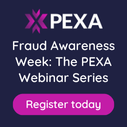Thirdfort makes three AML and KYC predictions for 2020
Thirdfort makes three Anti-Money-Laundering (AML) and Know Your Customer (KYC) predictions for 2020 and how they might affect your firm.
Prediction 1: Digital onboarding will become the norm and those firms who adopt it early will benefit most
Over the past year, challenger banks like Starling and Monzo have consistently taken on new customers, with Monzo acquiring over 3 million customers in the last 12 months, while most of their larger high street rivals lost them. A key contributor to this success is their use of digital onboarding which allows consumers to verify their identity and provide all account opening information via their smartphone. The entire process takes minutes and removes the hurdle of customers going in branch to complete time-consuming and tedious forms.
Luckily for conveyancers, law is following suit to make possible swift and secure client onboarding. Home movers can now use an app to verify their identity and provide scans of their ID, removing the hassle of hand delivering or posting documents to their conveyancer and releasing conveyancers from painful and manual document reviews. Even better, the technology behind these solutions is much more accurate at spotting fake documents in comparison to human review alone.
These solutions offer an easy, affordable and secure way to onboard clients faster and provide a slicker, more client-friendly experience. Conveyancers who have already adopted this technology are seeing onboarding times reduce to a matter of days, freeing up time to focus on delivering a great service, winning more business and ultimately gaining a competitive advantage over those who continue to stick to manual methods.
Prediction 2: Firms will come under increasing scrutiny from regulators and face harsher penalties for non-compliance
The 5th Anti-Money Laundering Directive (5MLD) will be introduced on the 10th January 2020 and with it a tightening of existing legislation. For conveyancers this means 1) the endorsement of electronic verification when undertaking client due diligence 2) enhanced due diligence for business relationships or transactions in high-risk third countries, and 3) clarity on who is and who is not a Politically Exposed Person (PEP).
However, many firms’ processes aren’t yet up to scratch with current legislation. In 2019 a review of risk assessments by the SRA found that over a third didn’t meet the required standard and site inspections by the CLC found over 60% of firms to be non-compliant with AML regulations.
As we approach 2020, firms can expect regulators to up the ante on risk assessments with the Government reviewing the role of AML supervisors which could lead to new obligations and potential penalties for firms.
What can firms do to avoid the stiff fines and penalties? The overarching message is that risk assessments are not a tick box exercise. Firms must evaluate their procedures and processes and identify where their risks lie. Assessments must be based on these risks and backed up by records of staff training and the documenting of anti-money laundering procedures to ensure adequate information is available to regulators when they knock on the door.
Prediction 3: Higher insurance premiums for those who don’t complete robust AML processes
Sole practitioners and small law firms were left shocked when in August of this year broker Aon stated that its Maven MGA scheme could no longer offer cover, following the likes of Aspen, Libra and Pioneer. These exits from the PII market have been blamed on Lloyd’s of London’s thematic review which highlighted PII as one of the worst performing syndicates and led to insurers leaving the market or raising premiums by as much as 20%.
Conveyancing is identified as the most high-risk area, where prudent underwriters are acutely aware of the potential catastrophic loss that this area could create in the event of things going wrong. What should conveyancers be doing to avoid higher premiums or even losing their cover?
Firms should be distinguishing themselves from others with 1) adequate and well-documented staff training 2) getting accredited (e.g. The Conveyancing Quality Scheme 3) a fully tailored risk assessment, and 4) showing active management and supervision of the risks with documentation to back up any claims. Additionally, a well written application and a good broker relationship can go a long way to ensuring conveyancers don’t lose their insurers.
This article was contributed by Thirdfort. If you would in finding out more about digital onboarding and how you can stay compliant, please get in touch here.
Kindly shared by Thirdfort


















